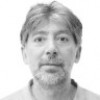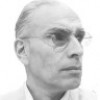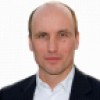With growing tech and IDF campus on its way, Beersheba readies for a ‘golden age’
From the DNA Bridge in Beersheba’s Gav Yam high-tech park, the future of this desert city looks wide open.
Established just 12 years ago in a city once better known for camels than for unicorns, the Gav Yam high-tech center is now a thriving hub of research and development for leading tech companies such as Microsoft, Dell, Wix, and Rafael Advanced Defense Systems. There are four buildings and some 3,000 employees, with construction on additional buildings that will more than triple those numbers in the coming years.
To the right, across the footbridge that is internationally acclaimed for its futuristic double helix design, is Ben Gurion University, with about 30,000 students. Slightly to the left of that is Soroka Medical Center, the primary hospital for the entire southern Negev region.
And to the left of that, you can see the location carrying the city’s big hopes for the future.
At the beginning of 2026, the IDF plans to begin moving most of its information and communication technology operations to its massive new 150,000 square meter (37-acre) technology campus in Beersheba, just several kilometers past the tech hub.
The new center would be the most significant milestone to date for the IDF’s broad multiyear plan to relocate much of its intelligence, training, and operational bases to the Negev. And it’s a moment that the city hopes will help take it to the next level, or as Mayor Ruvik Danilovich puts it, launch “a golden age for Beersheba.”
Danilovich and members of the local community have been working behind the scenes for years to connect the city’s technology, medical, and academic worlds to create an environment that will allow them all to interact and grow together, according to Omri Dai, CEO of Tech7, a high-tech accelerator for companies in Beersheba and the broader Negev region.
“I don’t like to use the word ecosystem, because it has become a cliche, but I think we have created a real ecosystem to establish the city as a high-tech metropolis that can serve as an economic anchor for the entire Negev to grow,” Dai said.
“I think something really special is happening here right now,” he added. “A strong Beersheba is the key to strengthening the entire Negev.”
To some, Beersheba’s high-tech aspirations may seem out of sync with its current reality. The city of some 220,000 residents is among the poorest large cities in Israel, and consistently ranks in the bottom quarter of Israel’s annual quality of life rankings.
A development town that quickly absorbed refugees from North Africa, the Middle East, and Eastern Europe in the 1950s and 1960s, Beersheba now has one of the highest crime rates in Israel, and the dusty, scorching desert climate can be unbearable at times. Some say the city suffers from a general sense of neglect.
The city’s Bedouin population is growing quickly, but a jump in the chronically underserved sector brings its own challenges. City planners say they are looking to develop new employment opportunities for the Bedouin community, even as Danilovich warns that the Negev is in danger of losing its Jewish majority.
Numerous foundational problems with the city’s planning need to be fixed, said Nurit Alfasi, who heads the urban planning program in the Department of Environmental, Geoinformatics and Urban Planning Sciences at Ben-Gurion University of the Negev.
“The city lacks a real center, and there is very little in terms of........






















 Toi Staff
Toi Staff Belen Fernandez
Belen Fernandez Gideon Levy
Gideon Levy Donald Earl Collins
Donald Earl Collins Eric Reinhart
Eric Reinhart Samer Jaber
Samer Jaber Moncef Khane
Moncef Khane Tarik Cyril Amar
Tarik Cyril Amar Yara Hawari
Yara Hawari Rachel Marsden
Rachel Marsden Marcel Fürstenau
Marcel Fürstenau
